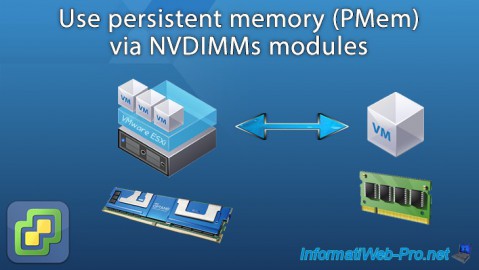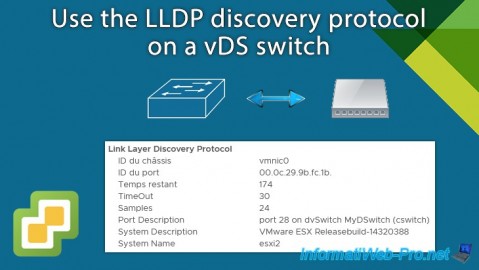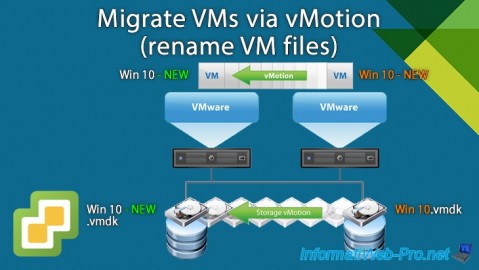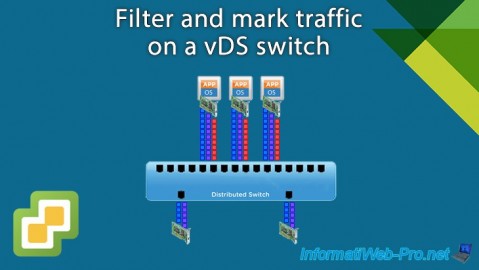Use real (PMem) or simulated (vPMem) persistent memory on VMware vSphere 6.7 via virtual disks
- VMware
- VMware vCenter Server (VCSA), VMware vSphere
- 07 February 2025 at 08:31 UTC
-

- 3/4
5. Persistent memory retained when restarting a VM
At the moment we have a "vPMEM" partition visible in file explorer.

For the tutorial, we created a test file inside this partition.

Now restart your virtual machine.

Once the virtual machine is restarted, you will see that our "vPMEM" partition is still present in file explorer.

If you go into this partition, you will see that the data is still there.

6. Restart VMware ESXi host
Now restart the VMware ESXi host.
To do this, from the "vSphere Client", select your VMware ESXi host and click: Actions -> Power -> Restart.
Remember: if you are using simulated "persistent" memory, restarting the host will clear the data in this persistent memory (PMem).
Additionally, the datastore identifier "PMemDS-..." will change as the data stored in persistent memory (PMem) will have been lost.
This is because when you use simulated "persistent" memory, data is physically stored in random access memory (RAM).

Or go to the web interface of your VMware ESXi host and click: Restart.

Next, confirm restarting this host.

7. Virtual persistent memory (PMem) cleared
Once your VMware ESXi host restarts, you will see that persistent memory is still available on it.
However, if you use simulated "persistent" memory, its contents will have been erased.

To check this, select a virtual machine to which you had allocated part of your host's "persistent" memory and you will see that a red icon appears for the "PMemDS-..." datastore referenced in the associated objects of it.
Indeed, due to the deletion of persistent memory when restarting your host, a new datastore "PMemDS-..." was created on your host with a new identifier.

8. Replace persistent memory disk
Try to start this virtual machine.

And an error will be displayed regarding a ".vmdk" file that cannot be accessed and located in a "PMemDS-..." datastore.
Plain Text
Unable to access virtual hard disk 'Hard disk 2' from host. This host is disconnected from the datastore or does not have sufficient privileges. Details: Unable to access file [PMemDS-...] [VM name]/[Virtual hard disk file name].vmdk.
As you may have understood, this is the SCSI virtual hard drive created previously and stored in PMem (persistent memory).
However, since the host's persistent memory has been erased, the old "PMemDS-" datastore no longer exists.
Hence the error concerning impossible access to this virtual hard disk (.vmdk).

If you change the settings of your virtual machine, you will see that a problem appears for hard disk 2 and that its size is 0 MB.

Delete this virtual hard drive by clicking on the cross that will appear to its right when hovered over it.
Then, check the box "Delete files from datastore" (although the VMDK file that was in the "PMemDS-" datastore already no longer exists).
Then click OK.

An error is displayed regarding the file ".vmdk" not found which was in a persistent memory (pmem) datastore.
You can ignore this error. This error is simply due to the fact that the "PMemDS-..." datastore in which the virtual hard disk was located no longer exists. Your server cannot therefore delete the file that was there, since this location no longer exists.
However, the reference to this virtual hard disk will have been deleted in the virtual hardware of your virtual machine.
Plain Text
Task name: Reconfigure virtual machine. Target: [Modified VM name] Status: File [] /vmfs/volumes/pmem:...[VM name]/[Virtual hard disk file name].vmdk not found.

Now click on the "Edit Settings" icon again.

Click: Add New Device -> Hard Disk.

For the new virtual hard disk that appears, specify the desired size (based on the amount of persistent memory (PMem) available in your case), then select the VM storage policy: Host-local PMem Default Storage Policy.

Then click OK.

Share this tutorial
To see also
-

VMware 1/6/2023
VMware ESXi 6.7 - Use persistent memory (PMem) via NVDIMMs modules
-

VMware 1/8/2025
VMware vSphere 6.7 - LLDP (Link Layer Discovery Protocol)
-

VMware 11/15/2024
VMware vSphere 6.7 - Migrate VMs via vMotion (rename VM files)
-

VMware 1/3/2025
VMware vSphere 6.7 - Traffic filtering and marking

No comment